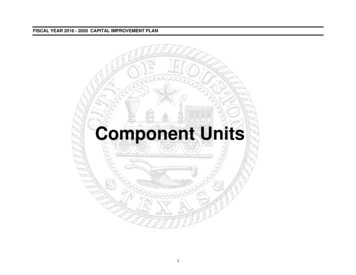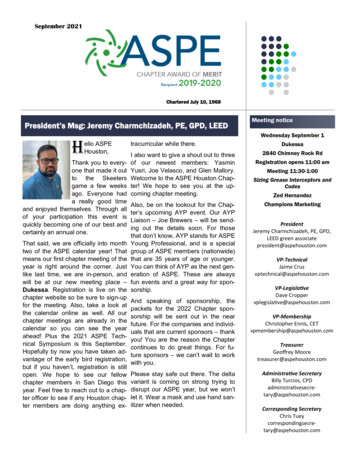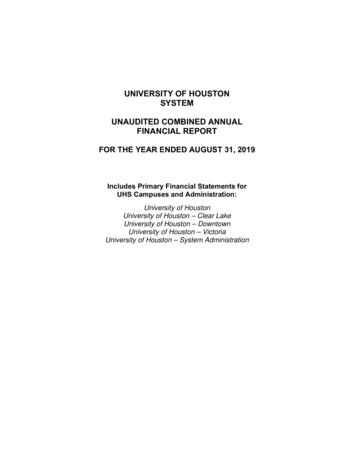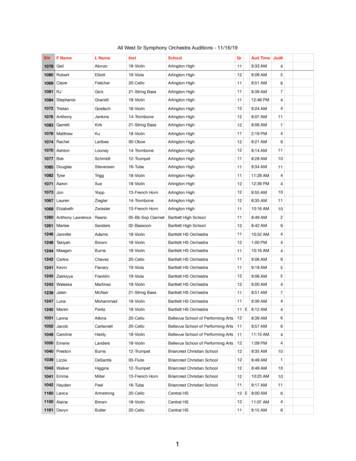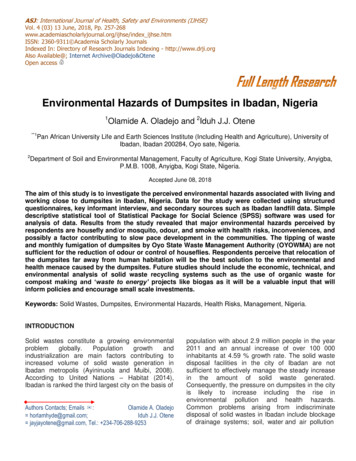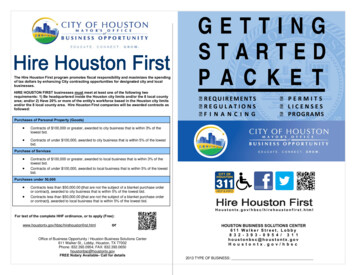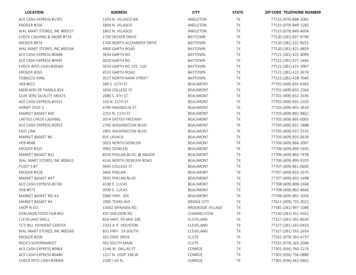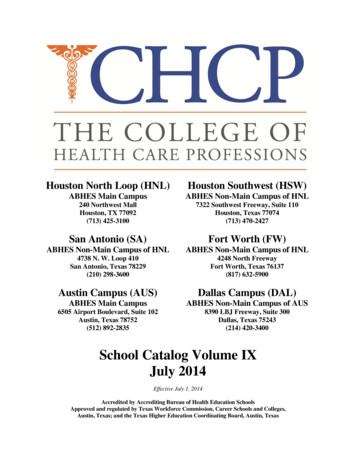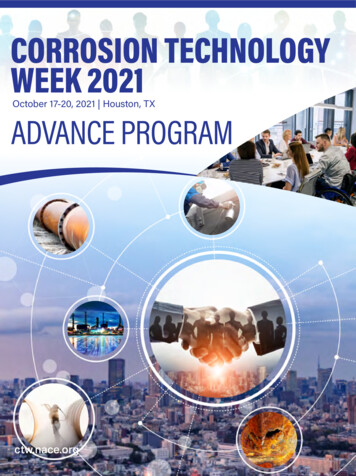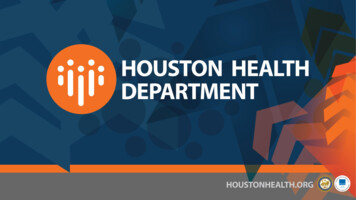
Transcription
Environmental Hazards inHouston NeighborhoodsPresentation Date: August 14, 2019Presented By:Loren Raun, PhDChief Environmental Science OfficerInterim Bureau ChiefBureau of Community & Children’s Environmental Health
OutlineI.Lead PoisoningI.Health EffectsII. Homes with Lead-Based PaintIII. High-Risk NeighborhoodsII. Air Pollution SourcesI.Neighborhood Pollution SitesII. Deer Park ITC FireIII. Health EffectsI.AsthmaII. Cardiac Arrest3
Lead PoisoningHEALTH EFFECTSIn 2017, 829 children screened were found to haveelevated blood lead levels (BLLs) above the CDC referencevalue of 5 μg/dL.Lead is traditionally found in paint, but children can beexposed through non-traditional sources such as toys,candies, jewelry, cosmetics, and more.Lead poisoning can lead to severe adverse health effects,with most behavioral and learning impairmentsmanifesting at BLLs 5 μg/dL.4
Lead PoisoningPEELING, CHIPPING, FLAKING LEAD PAINT5
Lead PoisoningLEAD-RISK HOUSING MAP – NEAR NORTHSIDE6
Lead PoisoningLEAD-RISK HOUSING MAP – FIFTH WARD7
Air Pollution SourcesMETAL RECYCLERIES, CONCRETE BATCH PLANTS, CONCRETE CRUSHERS8
Neighborhood Pollution SitesCMC METAL RECYCLERYData collected from risk assessmentsconducted at CMC Metal Recycler Northand South has shown an increase incarcinogenic risk for adult residents frominhalation of metals: Arsenic, Cadmium, Cobalt, and Nickel9
Neighborhood Pollution SitesUNION PACIFIC RAILROAD FACILITYRailroad ties were dipped in creosote,a preservative that is listed by the EPAas a cancer-causing chemical.Creosote emits harmful fumes andleaches into the surrounding soil.There have been concerns regardingcancer deaths in the nearby areas.The railroad site is in close proximityto Dogan Elementary School, leadingMap of affected residencesto concerns of children beingaffected.10
Concrete Batch PlantsThere are a total of 88 concrete batch plants in the city limits of various operational statuses.Since 2016 the Bureau of Pollution Control and Prevention has conducted over 40investigations of concrete batch plants within the City’s limits and found more than 40violations of TCEQ Standard Air Permit and City Ordinances.Violations included insufficient dust controls, nuisance conditions, inadequate bufferdistances (i.e., for locating of stockpiles) among others.11
Deer Park ITC FireVIEW OF THE FACILITY12
PM2.5 Data and Hospital/ED DataRegression of Hospital/ED visits Z-Scores on PM2.5Monitors Z-Scores, 3/17-3/2310R² 0.45668R² 0.3957Hospital/ED Visits Z-score6-44R² 0.65242R² 0.03670-20246810-2-4Monitors PM 2.5 Z-scoreAt Deer Park #2, 46% of the variability in Hospital/ED visits is explained by PM2.5.13
Asthma High Rate RegionsThe map shows where TCHP high-riskregions (heat map) were aligned with EMShigh-rate school zones (hatch markings) ofambulance-treated asthma attacks. Themap shows the 41 high-rate elementaryschools with the 19 highest rate schools,based on EMS and TCHP data,identified and coded as priorityintervention schools.14
Asthma High Rate RegionsELEMENTARY SCHOOLS15
Asthma High Rate RegionsMIDDLE SCHOOLS16
Asthma High Rate RegionsHIGH SCHOOLS17
Cardiac Arrest High Rate RegionsOut of hospital cardiac arresthigh-rate region for 2004 – 2011.18
Thank you!
Lead poisoning can lead to severe adverse health effects, with most behavioral and learning impairments manifesting at BLLs 5 μg/dL. Lead Poisoning . Asthma High Rate Regions The map shows where TCHP high-risk regions (heat map) were aligned with EMS . Cardiac Arrest High Rate Regions Out of hospital cardiac arrest high-rate region for .
